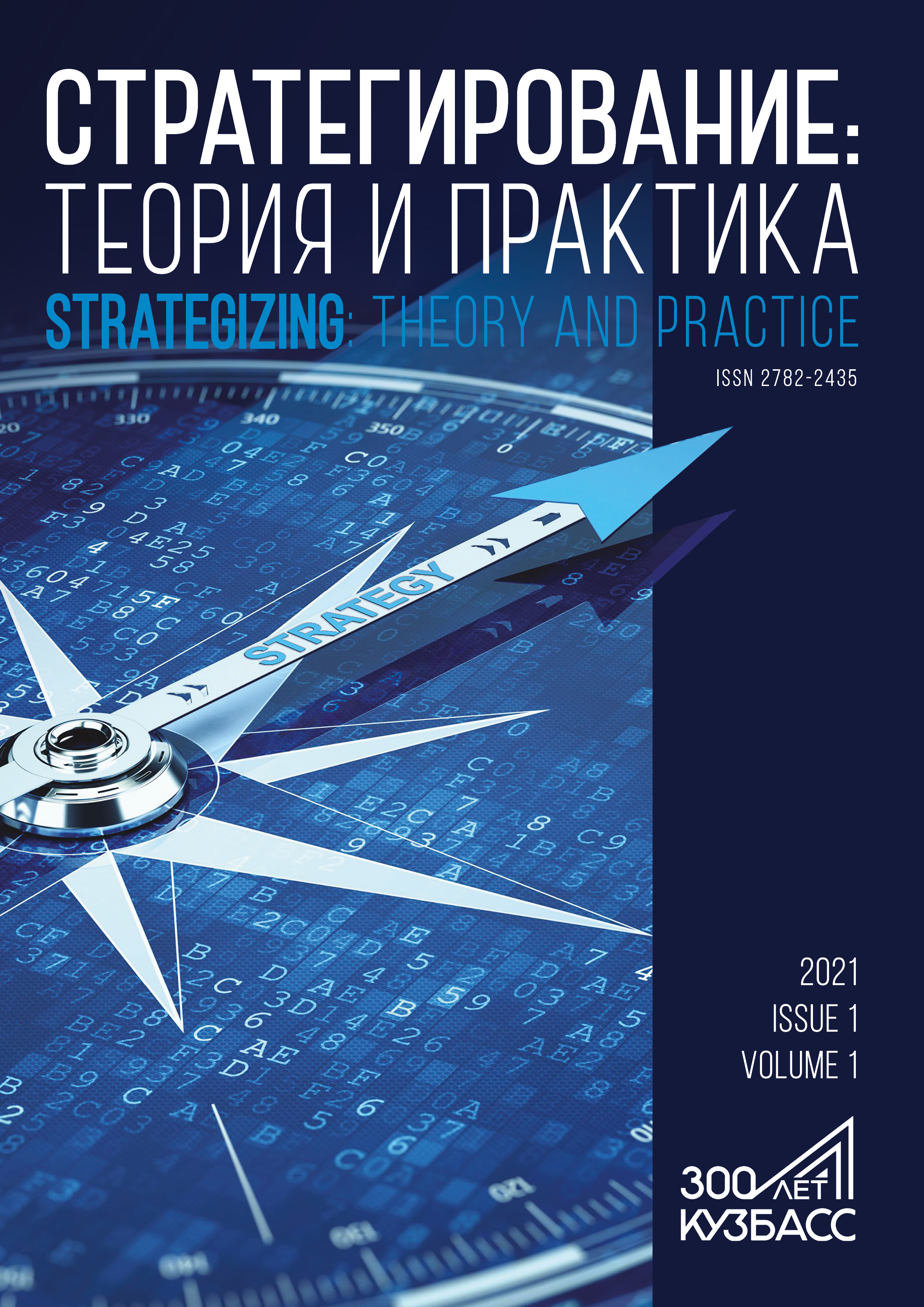Moscow, Moscow, Russian Federation
The current domestic strategizing practice needs significant improvements. On the one hand, innovative strategies should factor in the extreme variability of external environment. On the other hand, they should address long-term trends and goals, e.g., climate change, low-carbon economy, etc. This research featured the industrial strategizing of the Russian economy. In spite of the rapid changes postulated by the concepts of VUCA and BANI, proper strategizing can support effective transformations of companies and industries by cascading and synchronizing different economic policies. Most state-approved industrial strategies provide an effective in-depth situation analysis and problem definition but, being aimed at solving current problems, lack a long-term vision. As a result, they turn into catch-up development strategies that are unable to form leading positions in the future. The long-term goal of any innovative strategy is to develop the existing competencies, competitive advantages, and resource opportunities in order to attract additional resources and create new competitive advantages. Initially, industrial strategies can be limited to minimum allowable investment level that provide effective interaction between business, science, and the state, e.g., special economic zones, industrial clusters, digital platforms, etc. The resulting horizontal connections protect the economic system from the changing external environment.
strategy, trends, sustainable development goals, Paris Climate Agreement
1. Astapov KL. Postindustrialʹnye vyzovy rossiyskoy ehkonomike [Post-industrial challenges to the Russian economy]. Moscow: TEIS; 2009. 270 p. (In Russ.)
2. Bobylev SN, Solovyeva SV, Kiryushin PA. The collapse of the global consumption model: In search of sustainability. World Economy and International Relations. 2022;66(11):92-100. (In Russ.) https://doi.org/10.20542/0131-2227-2022-66-11-92-100
3. Druker PF. Menedzhment. Vyzovy XXI veka [Management. Challenges of the XXI century]. Moscow: Mann, Ivanov i Ferber; 2012. 235 p. (In Russ.)
4. Kastelʹs M. Informatsionnaya ehpokha: Ehkonomika, obshchestvo i kulʹtura [The age of information: Economy, society, and culture]. Moscow: HSE University; 2000. 608 p. (In Russ.)
5. Kvint VL, Astapov KL. Kuzbass Strategy over 50-year planning horizon: Publications on Strategy of the Kuzbass Region. Strategizing: Theory and Practice. 2021;1(2):123-135. (In Russ.) https://doi.org/10.21603/2782-2435-2021-1-2-123-135
6. Kvint VL, Novikova IV, Alimuradov MK. Alignment of global and national interest with regional strategic priorities. Economics and Management. 2021;27(11):900-909. (In Russ.) https://doi.org/10.35854/1998-1627-2021-11-900-909
7. Kishita Yu. Foresight and roadmapping methodology: main trends and outlook. Forsajt. 2021;15(2):5-11. (In Russ.) https://doi.org/10.17323/2500-2597.2021.2.5.11
8. Musaev RA, Astapov KL, Pankratov AA. The role of cluster policy in the Russian economy modernizing. Management Theory and Practice. 2020;(10):101-119. (In Russ.) https://doi.org/10.46486/0234-4505-2020-10-101-119
9. Kvint VL, Fetisov VA. The fundamentals of Russia's environmental development strategy. Moscow: Lomonosov Moscow State University - Publishing House; 2021. 77 p. (In Russ.) https://doi.org/10.29003/m2447.978-5-19-011631-1
10. Toffler Eh. Shok budushchego [Future shock]. M.: AST; 2003. 557 p. (In Russ.)
11. Shvyrkov YuM. Gosudarstvennoe indikativnoe planirovanie: teoriya, istoriya, sovremennaya praktika: (rossiyskiy i zarubezhnyy opyt) [State indicative planning: theory, history, and modern practice in Russian and foreign experience]. Moscow: Prospekt; 2007. 345 p. (In Russ.)
12. Bennis WG, Nanus B. Leaders: Strategies for taking charge. HarperCollins; 2003. 256 p.
13. Grant RM. Contemporary strategy analysis. John Wiley & Sons; 2016. 776 p.
14. Kaplan RS, Norton DP. Using the balanced scorecard as a strategic management system. Harvard Business Review. 1996;74(1):75-85.
15. Kenichi O. The mind of the strategist: The art of Japanese business. McGraw Hill; 1982. 283 p.
16. Kvint VL. Strategy for the global market: Theory and practical applications. New York, London: Routledge; 2016. 519 p.
17. Phelps ES. Mass flourishing: How grassroots innovation created jobs, challenge, and change. Princeton University Press; 2013. 392 p.
18. Porter M. The five competitive forces that shape strategy. Harvard Business Review. 2008;86(1):78-93.
19. Schumpeter JA. The theory of economic development: An inquiry into profits, capital, credit, interest, and the business cycle. Harvard University Press; 2011. 244 p.






